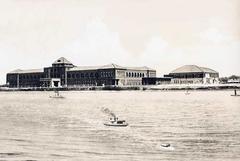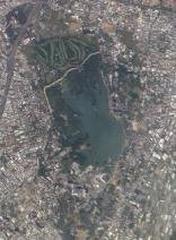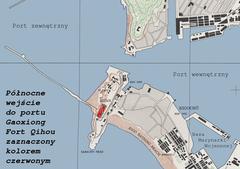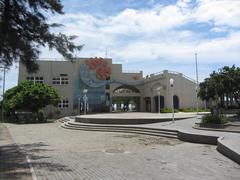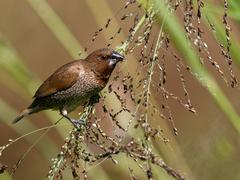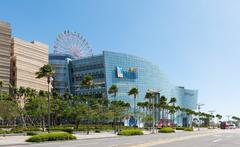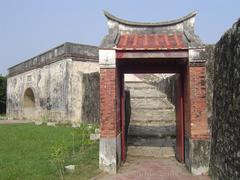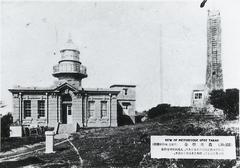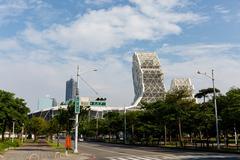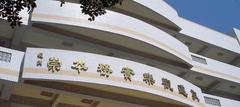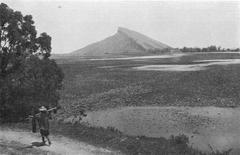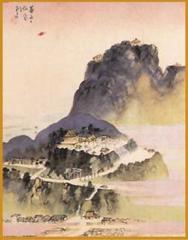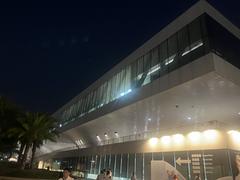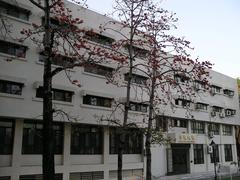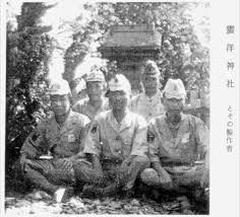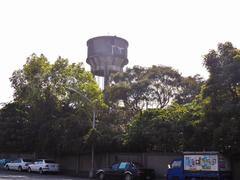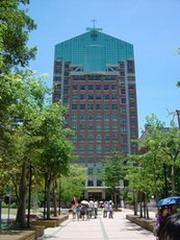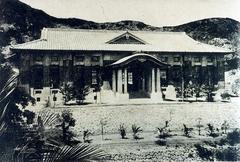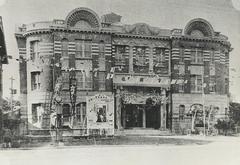Shuangyuan Bridge: Visiting Hours, Tickets, and the Ultimate Guide to Kaohsiung’s Historic Landmark
Date: 04/07/2025
Introduction
Shuangyuan Bridge (雙園橋), a striking feat of modern engineering and a symbol of Kaohsiung’s resilience, stands as a vital gateway connecting Kaohsiung City and Pingtung County along Provincial Highway 17. More than a transportation artery, the bridge embodies the city’s synthesis of tradition, urban progress, and disaster preparedness. With its blend of Taiwanese architectural motifs and advanced structural technology, Shuangyuan Bridge attracts not only commuters but also culture seekers, photographers, cyclists, and history enthusiasts.
This guide provides everything you need to know: from the bridge’s historical significance and engineering evolution to practical visitor details, accessibility, and the best nearby attractions. Whether you’re planning a sightseeing trip, a family outing, or an architectural tour, Shuangyuan Bridge offers a unique window into Kaohsiung’s vibrant heritage and contemporary spirit (Kaohsiung Modern Culture; Taiwanese Architecture; Taipei Times).
Table of Contents
- Introduction
- Historical Background
- Architectural and Engineering Highlights
- Visiting Information
- Nearby Attractions
- Events and Photography
- Integration with Urban Development
- Sustainability and Maintenance
- Travel Tips
- FAQs
- Conclusion
- Sources
Historical Background
Origins and Context
Shuangyuan Bridge was constructed in the early 2000s to accommodate Kaohsiung’s rapid urban growth and to enhance connectivity between Nanzih, Zuoying, and Pingtung County. It plays a strategic role in regional movement and economic integration, supporting daily commutes, freight transport, and tourism (Kaohsiung Modern Culture).
Disaster and Reconstruction
The bridge’s critical importance was highlighted by the devastating Typhoon Morakot in 2009, which caused its collapse due to unprecedented flooding and exposed the vulnerabilities of its original multi-pier design (Taipei Times; Academia.edu). The new bridge, completed in 2011, features deep-set foundations and a reduced number of piers, making it highly resistant to scouring, seismic activity, and typhoon-induced forces.
Architectural and Engineering Highlights
Design and Materials
Shuangyuan Bridge’s design fuses traditional Taiwanese motifs with contemporary aesthetics. Its gently arched structure, reinforced concrete, and steel superstructure provide both durability and visual harmony with the landscape (Taiwanese Architecture).
Engineering Innovations
The bridge is anchored by 19 piers set 68 meters into the riverbed, a significant advancement over the former 60-pier design. This reduces environmental impact and increases resilience against extreme weather (Taipei Times). Oceanic themes and decorative elements along the balustrades celebrate the maritime culture of southern Taiwan (360Cities).
Visiting Information
Hours and Tickets
- Visiting Hours: Open 24 hours a day. The bridge and surrounding parks are accessible at all times, making it ideal for sunrise strolls, sunset photography, or evening walks.
- Tickets: There is no entrance fee—access is completely free.
Accessibility
- Pedestrian and Cycling Paths: Dedicated walkways and cycle lanes ensure safe passage for all.
- Wheelchair Access: Ramps and smooth pathways make the bridge friendly for wheelchairs and strollers.
- Lighting: The bridge is well-lit at night, enhancing safety and creating a picturesque environment.
Getting There
- By MRT: Take the Kaohsiung MRT to Nanzih Export Processing Zone Station (Red Line). From there, a short taxi or local bus ride brings you to the bridge (Kaohsiung MRT info).
- By Bus: Several city and intercity bus routes stop near the bridge.
- By Car: Public parking is available near the bridge, especially on the Nanzi and Linyuan sides. Parking may be limited during peak times.
Nearby Attractions
- Pier-2 Art Center: Vibrant art district with galleries and creative installations.
- Love River: Scenic riverside cafes and romantic boat rides.
- Lotus Pond: Temples and pagodas, accessible by bike or car.
- Cijin Island: Beaches, seafood markets, and historic lighthouse.
- Asia New Bay Area: Urban renewal zone with modern parks and event spaces (Stantec).
Events and Photography
- Festivals: The bridge is a hub during events like the Lantern Festival and Dragon Boat Races, with temporary light installations and vibrant community celebrations.
- Photo Opportunities: Sunrise and sunset offer the best natural lighting; nighttime showcases the bridge’s illumination and city skyline.
- Cycling Tours: The bridge is part of popular cycling routes along the river.
Integration with Urban Development
Shuangyuan Bridge is integral to Kaohsiung’s urban transformation, linking green spaces, commercial zones, and cultural landmarks. Its reconstruction after Typhoon Morakot set a new standard for disaster-resilient infrastructure in Taiwan (EAA Architecture Guide).
Sustainability and Maintenance
Durable materials, deep foundations, and a minimal number of piers ensure longevity and reduce the need for frequent maintenance. Environmental sustainability is prioritized through careful flood management and riverbank stabilization (EAA Architecture Guide).
Practical Travel Tips
- Transportation: Use the EasyCard for seamless travel on MRT and buses.
- Facilities: Restrooms and benches are located in adjacent riverside parks.
- Food: Local snacks and convenience stores are within walking distance.
- Safety: Walkways are separated from traffic; exercise standard caution at night.
- Weather: Bring sun protection or rain gear depending on the season.
- Language: English is increasingly used at tourist sites; translation apps are helpful.
Frequently Asked Questions (FAQ)
Q: What are the visiting hours for Shuangyuan Bridge?
A: The bridge is open 24 hours a day.
Q: Is there an entrance fee?
A: No, access to the bridge is free for all visitors.
Q: Is the bridge wheelchair accessible?
A: Yes, there are ramps and smooth walkways for wheelchairs and strollers.
Q: Are guided tours available?
A: While there are no official tours, local agencies may include the bridge in broader Kaohsiung itineraries.
Q: What’s the best time for photography?
A: Sunrise, sunset, and nighttime hours provide the most scenic views.
Q: How do I reach the bridge by public transport?
A: Take the MRT Red Line to Nanzih Export Processing Zone Station and continue by taxi or bus.
Q: What attractions are nearby?
A: Pier-2 Art Center, Love River, Lotus Pond, Cijin Island, and Asia New Bay Area.
Conclusion
Shuangyuan Bridge stands as a remarkable symbol of Kaohsiung’s spirit—where tradition meets innovation and resilience fosters community pride. Open 24/7 and free to all, the bridge is not just an infrastructural marvel but a scenic gathering place, event venue, and gateway to the city’s historical and cultural riches. Whether you’re seeking panoramic views, cultural experiences, or simply a pleasant walk, Shuangyuan Bridge promises an unforgettable visit.
Plan your trip, explore the vibrant surroundings, and experience the enduring legacy of this Kaohsiung icon. For the latest updates, download the Audiala app and follow us for real-time travel tips and event news.
Sources and Further Reading
- Kaohsiung Modern Culture
- Taiwanese Architecture: A Fascinating Blend of Traditional and Modern Styles
- Shuangyuan Bridge Taiwan, 360Cities
- Bridges: Connecting Communities through Infrastructure, FasterCapital
- Shuangyuan Bridge Reconstruction and Engineering, Taipei Times, 2009
- A Forensic Study on the Collapse of Shuang Yuan Bridge during Typhoon Morakot in Taiwan, Academia.edu
- The Rich History of Kaohsiung: Dive into the Past of Taiwan’s Historical Port City, The Amazing Taiwan
- Asia New Bay Area in Kaohsiung, Stantec
- 10 Best Architectural Buildings in Kaohsiung, Taiwan, EAA Architecture Guide
